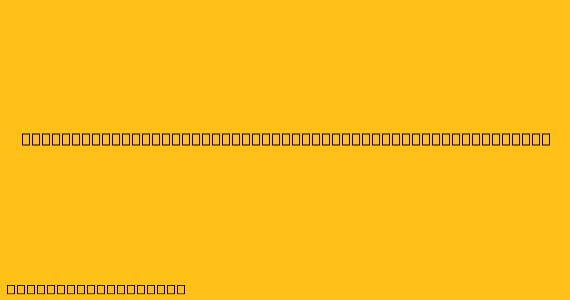How to Write a Letter in English: A Comprehensive Guide
Writing a letter in English can be daunting, especially if you're not familiar with the structure and conventions. However, with a clear understanding of the essential elements, you can craft a professional and effective letter for any purpose. This guide will provide you with a comprehensive overview of the structure of a letter in English, along with examples to help you understand each component.
Basic Structure of a Letter in English
A standard English letter consists of the following parts:
- Heading: This section includes your name and address, as well as the date. It's usually placed in the top right corner of the page.
Example:
[Your Name]
[Your Address]
[City, State, Zip Code]
[Date]
- Inside Address: This section contains the recipient's name, title (if applicable), and address. It's placed on the left side of the page, below the heading.
Example:
[Recipient Name]
[Recipient Title]
[Recipient Address]
[City, State, Zip Code]
- Salutation: This is the greeting of your letter. It's typically followed by a colon.
Example:
Dear [Recipient Name],
- Body Paragraphs: This is the main part of your letter where you present your message. Break the content into different paragraphs to improve readability and clarity.
Example:
This paragraph introduces the topic of the letter and states your purpose.
This paragraph provides more details about your message, explaining the situation and providing relevant information.
This paragraph concludes your letter, summarizing the main points and stating any actions you expect from the recipient.
- Closing: This is a polite ending to your letter. It usually includes a closing phrase and your signature.
Example:
Sincerely,
[Your Signature]
[Your Typed Name]
- Enclosures: If you're including any additional documents, you can add a line indicating the enclosures below your closing.
Example:
Enclosures:
- [List of enclosed documents]
Different Types of Letters
Depending on the purpose of your letter, you may need to adjust the structure and tone. Here are some common types of letters:
1. Formal Letters:
These letters are used for official purposes, such as business correspondence, complaints, or applications. They are typically written in a formal tone and follow a strict structure.
2. Informal Letters:
These letters are used for personal communication, such as writing to friends or family members. They are typically written in a casual tone and can deviate from the formal structure.
3. Business Letters:
These letters are used for professional communication, such as requesting information, sending invoices, or making inquiries. They are typically written in a formal and professional tone.
4. Cover Letters:
These letters are used to introduce yourself and your qualifications when applying for a job. They are typically written in a concise and persuasive tone.
Example Letter
Here is an example of a formal business letter:
[Your Name]
[Your Address]
[City, State, Zip Code]
[Date]
[Recipient Name]
[Recipient Title]
[Recipient Address]
[City, State, Zip Code]
Dear [Recipient Name],
I am writing to inquire about the [product/service] you offer. I am interested in [specific detail about product/service].
I have been researching [relevant industry/company] for some time now, and your company has consistently impressed me with [mention specific reasons].
I would appreciate it if you could send me more information about your [product/service], including [mention specific details]. I am also interested in learning about [specific question/inquiry].
Thank you for your time and consideration. I look forward to hearing from you soon.
Sincerely,
[Your Signature]
[Your Typed Name]
Tips for Writing Effective Letters
Here are some tips to help you write effective letters in English:
- Proofread carefully: Ensure your letter is free of grammatical and spelling errors.
- Use a clear and concise writing style: Avoid using jargon or overly complex language.
- Be polite and professional: Even when writing about a sensitive topic, maintain a respectful tone.
- Keep it brief and to the point: Avoid unnecessary details and stick to the main purpose of your letter.
- Be specific: Provide enough information for the recipient to understand your message and take appropriate action.
By understanding the basic structure and following these tips, you can write effective and professional letters in English.
